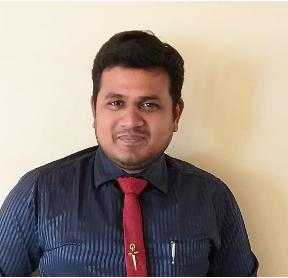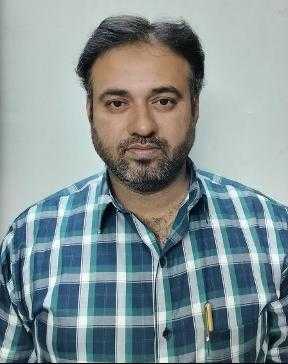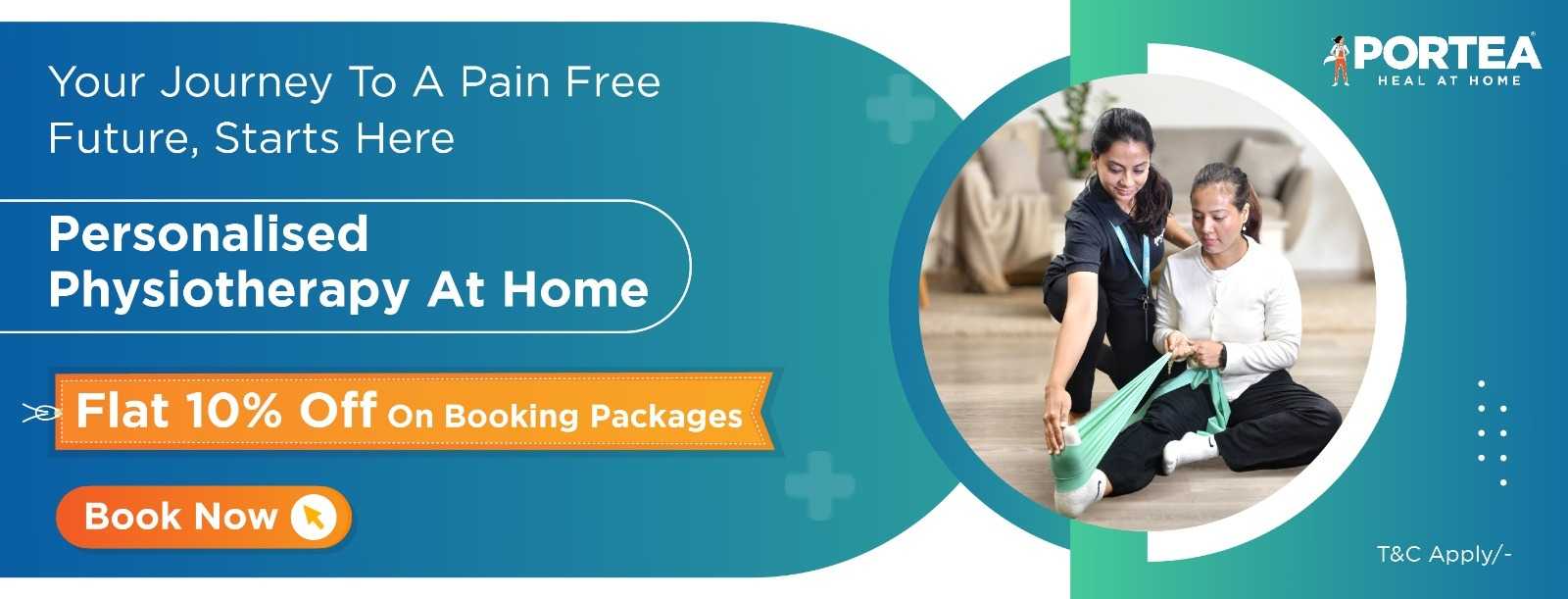
Expert Physiotherapy at Home
Certified physiotherapists visit you at home to provide focused, one-on-one care tailored to your needs. With no travel or waiting rooms, recovery happens in a setting that is comfortable, familiar, and built around your convenience.
Personalised Recovery Programmes
Every treatment plan is designed to suit your condition, goals, and pace. Our physiotherapists follow structured, evolving protocols to ensure consistent progress, with each session aligned to deliver meaningful results.
Trusted Physiotherapists. Real Results.
Our team comprises experienced, background-verified physiotherapists trusted by thousands of families. With a strong focus on safety, reliability, and clinical outcomes, we make recovery at home both effective and reassuring
Patient Testimonials
Portea Physiotherapists for Home Visits
Meet some of our experienced and dedicated healthcare professionals

Dr. Lokesh G
Physiotherapist
Specializations
Experienced in Neurological rehabilitation, Orthopaedic physiotherapy, and Paediatric care
Delivers structured, high-impact treatment plans across neuro, ortho, and paediatrics—ensuring safety, comfort, and measurable recovery at every stage.

Dr. Mohammed Sarwar
Physiotherapist
Specializations
Experienced in Neurological rehabilitation, Adult physiotherapy, and Paediatric care
Combines deep clinical expertise with a compassionate approach, supporting both adults and children through neuro and physical rehabilitation that promotes long-term independence and recovery.

Dr. Nelapati Divya
Physiotherapist
Specializations
Skilled in Orthopaedic rehabilitation, Manual therapy techniques, and Paediatric physiotherapy
Brings a personalised, hands-on approach to healing—combining structural expertise with paediatric sensitivity to restore movement, relieve pain, and improve everyday function.

Dr. Naveen V
Physiotherapist
Specializations
Trained in Pain management, Cardiac and Orthopaedic rehabilitation, Neurological care, and Neural tissue mobilisation
Brings clinical precision and empathy together—designing science-backed recovery protocols for pain relief, nerve mobilisation, and cardio-neuro-ortho rehabilitation across all age groups

Dr. Miloni Savla
Physiotherapist
Specializations
Holds an MPT in Orthopaedics with a focus on Musculoskeletal rehabilitation and strength recovery
Delivers focused, movement-oriented therapy grounded in orthopaedic science—helping patients rebuild strength, restore function, and return to daily life with confidence
Other Cities
Physiotherapy Treatments

physiotherapy for retrolisthesis: early diagnosis & care
Retrolisthesis is a spinal condition that affects the alignment and stability of the vertebrae. It can cause pain, stiffness, and nerve-related issues if left untreated. Early diagnosis and proper care, primarily through physiotherapy, can make a big difference in managing the condition.
what is retrolisthesis?
Retrolisthesis is a condition where one vertebra slips backwards in relation to the vertebra below it. This misalignment can occur anywhere along the spine, but is most commonly seen in the lower back, known as lumbar retrolisthesis. It may result in pain, reduced flexibility, or nerve compression depending on severity. While often mistaken for other spinal issues, retrolisthesis has distinct symptoms and treatment needs.
symptoms of retrolisthesis
Recognising the symptoms early can help you seek timely treatment and prevent further complications. Here are the most common retrolisthesis symptoms, especially for the lumbar region:
- Lower back pain: Often dull or aching, worsens with movement or standing.
- Stiffness: Reduced spinal flexibility, especially after long periods of sitting.
- Numbness or tingling: In legs or buttocks, due to nerve compression.
- Weakness in the legs: A feeling of heaviness or loss of muscle control.
- Poor posture or imbalance: You may lean to one side or walk unevenly.
- Difficulty standing upright: Prolonged standing becomes uncomfortable.
- Pain that radiates: Downward into the thighs or legs, similar to sciatica.
If you notice a combination of these symptoms, especially after a fall or injury, it’s essential to consult a medical professional.
causes of retrolisthesis
Several factors may contribute to retrolisthesis. The most common causes include:
- Degenerative disc disease: As spinal discs lose cushioning, vertebrae may shift.
- Spinal injuries: Accidents, falls, or sudden trauma can misalign vertebrae.
- Poor posture: Long-term poor sitting or standing posture can strain the spine.
- Congenital weakness: Some people are born with spinal conditions that increase their risk.
- Arthritis: Joint inflammation can destabilise spinal segments.
- Nerve compression or numbness: In some cases, retrolisthesis numbness may occur due to pressure on the spinal cord or nerves.
Understanding the cause helps tailor the treatment and avoid recurrence.
diagnosis of retrolisthesis of the lumbar
Accurate diagnosis is essential to understand the severity and plan the right care. Here’s how retrolisthesis is diagnosed, particularly for lumbar cases:
- Physical examination: The doctor checks your posture, flexibility, and pain areas.
- X-rays: These are the primary tools to detect the backwards slippage of vertebrae. Lateral (side-view) X-rays show how far the vertebra has shifted.
- MRI scans: Used to evaluate soft tissues, nerve roots, and disc health. Helps rule out other spinal issues.
- CT scans: Provide a 3D view of the bones and joints, making them useful for complex cases.
- Neurological tests: To assess reflexes, strength, and nerve involvement.
The condition is often graded as mild, moderate, or severe based on how much displacement is visible in imaging.
retrolisthesis treatment options
Treatment for retrolisthesis depends on the severity and the presence of nerve symptoms. Here’s an overview:
Non-Surgical Treatment:
- Retrolisthesis physiotherapy exercises: The most effective conservative approach. Focuses on improving mobility, strengthening the core, and reducing pain. This may include pelvic tilts, core stabilisation routines, stretching tight back muscles, and postural correction drills.
- Medication: Pain relievers, anti-inflammatories, or muscle relaxants as needed.
- Bracing: In some cases, a lumbar brace may be recommended for support.
- Lifestyle Changes: Posture correction, weight management, and ergonomic adjustments.
Surgical Options:
- Reserved for severe cases with significant nerve compression or instability.
- May include spinal fusion or decompression procedures.
Physiotherapy for Retrolisthesis at Home with Portea
Portea offers retrolisthesis treatment from the comfort of your home. Our certified physiotherapists will:
- Assess your condition and pain level
- Create a personalised exercise and recovery plan
- Provide guided sessions to improve mobility
- Help track progress and avoid complications
Whether you’re recovering from injury or managing chronic discomfort, in-home physiotherapy ensures safe, effective care tailored to your needs.
why choose portea?
Choosing Portea means access to expert care at your convenience. Here’s what sets us apart:
- Certified and experienced physiotherapists
- Customised treatment plans for each patient
- Safe in-home sessions to avoid travel stress
- Transparent pricing and flexible booking
- Trusted by thousands of patients across India
Book your first session today and take the first step toward a pain-free back.
faqs about retrolisthesis
1. Which exercises help in managing retrolisthesis?
Core strengthening, pelvic tilts, hamstring stretches, and posture correction exercises are highly beneficial. Always do them under professional guidance.
2. What are the symptoms of lumbar retrolisthesis?
Symptoms include lower back pain, stiffness, numbness in the legs, muscle weakness, and difficulty maintaining posture or balance.
3. Can retrolisthesis be treated at home?
Yes, mild to moderate cases can be treated with physiotherapy, posture correction, and home care under expert supervision, like Portea’s home physiotherapy services.
4. Is physiotherapy effective for retrolisthesis treatment?
Absolutely. Physiotherapy strengthens the spine, improves flexibility, and reduces nerve compression, making it a preferred non-surgical treatment.
5. How long does it take to recover from retrolisthesis?
Recovery varies. Mild cases may improve in weeks, while chronic or severe cases might take months. Consistent physiotherapy accelerates healing.
References
Doctor Consultation
Nursing
Physiotherapy
Trained Attendant
Elder Care
Mother & Baby Care
Lab Tests
Medical Equipment
Speciality Pharma
Critical Care




